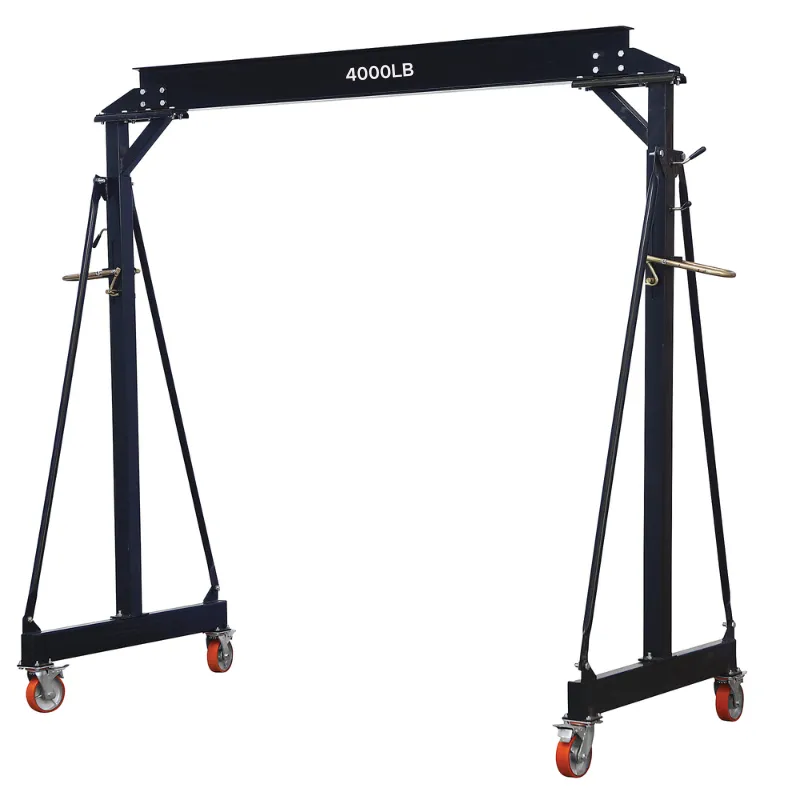industrial skates for moving heavy equipment
Industrial Skates for Moving Heavy Equipment An Essential Tool for Efficiency
In today’s fast-paced industrial environment, the need for efficient and safe movement of heavy equipment is paramount. Companies are continually seeking solutions that not only streamline their operations but also ensure the safety of their personnel. One such solution that has gained popularity is the use of industrial skates for moving heavy equipment. This article will explore what industrial skates are, their advantages, their types, and best practices for using them effectively.
What are Industrial Skates?
Industrial skates, often referred to as machinery skates or dollies, are specialized devices designed to facilitate the movement of heavy equipment and machinery. They are typically made from robust materials, such as steel or heavy-duty plastic, and come equipped with wheels or rollers that minimize resistance when sliding heavy objects. With the ability to bear substantial weights – often several tons – industrial skates allow for the safe and efficient relocation of heavy machinery within warehouses, factories, and construction sites.
Advantages of Using Industrial Skates
1. Increased Safety One of the primary benefits of using industrial skates is the enhanced safety they provide. Traditional methods of moving heavy equipment often involve manual lifting or using makeshift solutions, which can lead to injuries. Industrial skates distribute weight evenly and allow for smoother maneuvering, reducing the risk of accidents.
2. Efficiency and Time-Saving Moving heavy equipment can be a time-consuming process. Industrial skates enable workers to relocate machinery with minimal effort, which not only saves time but also increases overall productivity. With the right skates in place, tasks that once took multiple personnel to accomplish can often be done by a single operator.
3. Cost-Effectiveness By reducing potential injuries and downtime associated with accidents or equipment failure, industrial skates can save companies significant amounts of money in the long run. Their initial investment pays off through decreased labor costs and reduced insurance premiums.
4. Versatility Industrial skates come in various sizes and designs to accommodate different types of machinery. From large manufacturing equipment to smaller generators, there is a skate suitable for nearly any heavy object that needs moving.
Types of Industrial Skates
There are several types of industrial skates available, each designed for specific applications
1. Standard Machinery Skates These skates are equipped with wheels and are ideal for moving machinery over flat surfaces. They often have a low profile to accommodate wide loads.
industrial skates for moving heavy equipment

2. Pneumatic Skates Designed for uneven surfaces or outdoor conditions, pneumatic skates feature air-filled tires that provide better traction and stability.
3. Hydraulic Skates For extremely heavy equipment, hydraulic skates can lift and move loads using a hydraulic pump, making them suitable for larger machines.
4. Modular Skates These skates can be assembled into different configurations to accommodate various sizes and shapes of equipment, offering maximum customization for specific industrial needs.
Best Practices for Using Industrial Skates
While industrial skates are an excellent tool for moving heavy equipment, using them safely and effectively is crucial. Here are some best practices
1. Training Ensure that all personnel involved in moving equipment are adequately trained in the use of skates. Understanding the proper technique is vital for safety and efficiency.
2. Weight Assessment Always check the weight of the equipment before attempting to move it. Make sure that the industrial skates chosen can support the weight without risk of failure.
3. Clear Pathway Prior to moving equipment, inspect the pathway for any obstacles, debris, or uneven surfaces that could impede the movement or cause accidents.
4. Team Communication If multiple people are involved in the move, establish clear communication. Designate a leader to coordinate the movement and ensure everyone is aware of their roles.
5. Regular Maintenance Regularly inspect and maintain the skates to ensure they are in good working condition. Check wheels, bearings, and any hydraulic components for wear and damage.
In conclusion, industrial skates are an invaluable asset for any organization that frequently handles heavy equipment. Their ability to enhance safety, improve efficiency, and offer versatility makes them a must-have tool in various industrial settings. By implementing best practices and understanding the different types of skates available, businesses can optimize their operations while ensuring the safety of their workforce.
-
Unlock Seamless Relocation with Our Heavy Equipment Moving ExpertiseNewsJun.06,2025
-
Unleash Unrivaled Flexibility with Our Adjustable Gantry CraneNewsJun.06,2025
-
Unleash Heavy-Duty Efficiency with Our Industrial Gantry Crane SolutionsNewsJun.06,2025
-
Revolutionize Steel Handling with Our Magnetic Lifter RangeNewsJun.06,2025
-
Master Equipment Mobility with Premium Machinery Mover SolutionsNewsJun.06,2025
-
Elevate Your Material Handling with Magnetic Lifter TechnologyNewsJun.06,2025
-
YS Permanent Lifting Magnets: The Smarter Way to Handle SteelNewsMay.22,2025
